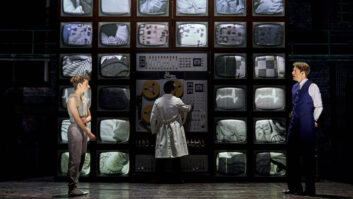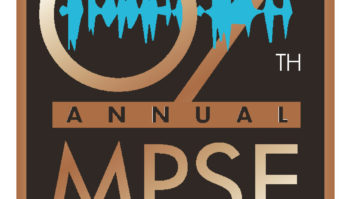Last month, I discussed an Open Source DAW, so this month, let’stake a look at some hardware aspects of that DIY DAW by taking what isa free computer — or nearly so — and shutting upeverything that creates so much darn acoustical noise. In a word orthree: a silent PC. Heads up all you underpaid musicians and engineers!It’s fairly easy to find an older computer for free, or less than $50at least, that someone has in their closet gathering dust. The price isright, but you probably wouldn’t want it sitting next to you whenyou’re working, because the noise it makes will ruin your day.
DEALING WITH NOISE AT THE SOURCE
There are actually two things to consider in this whole effort toquiet down a garden-variety PC, one being electrical and the otheracoustical. Let’s start with electrical or RFI noise within the boxmaking its way into your sound card. Suffice to say that you want bothdirections of analog conversion outside the case, otherwiseyou’re asking for a less-than-ideal noise floor in your signal paths.Granted, with careful grounding and shielding, it’s possible toconvince an analog converter to make nice in such a hostileenvironment, but why fight it? Better to simply take an electricaldigital audio signal — either AES/EBU Type I or Type IIunbalanced, MADI, USB or FireWire — out of the computer andconvert it externally. Notice I didn’t say optical. Plastic OpticalFiber (POF) is high-loss and thus jitter-prone, so unless cable lengthsare kept short, it’s crap. Once the data’s outside the case, convert itto analog using the best that your budget can afford and — boom!— you’re there, wherever “there” is for you.
As to RFI/EMI escaping the box, one has to assume that theentire case is conductive and grounded, and that all air gaps inthe case are gasketed. Though I can’t imagine not having one alreadyincluded inside your PC, an inline filter on the incoming AC goes along way at keeping the power cord — all three prongs intact,please — from becoming a noise-radiating antenna.
TURNING DOWN THE HEAT
Okay, so we’ve got the radio spectrum noise dealt with, now let’stake a look at the three horsemen of the acoustical apocalypse: motors,turbulence-induced noise and mechanical resonances. The Number Oneproblem is motors. They cause the other two problems, so if we couldeliminate them entirely, we’d be way ahead of the game. This ispossible to do as long as the high-current drawing parts, like the CPU,are cooled in some unconventional manner.
Cooling a CPU the old-school way entails increasing the surface areaof a passive heat sink, which is great if you’re not using a modernhot-running Intel part. Another approach is water cooling, quite commonin over-clocking circles, while a third method, waste heat removal, isto heat pipes; both require coupling to oversized heat sinks, a viable,if not visually pleasing and space-saving choice. Heat pipes distributethe unwanted heat to the furthest reaches of the heat sink and, fromthere, convection transfers the heat to the surrounding air. A fourthoption, which seems to have fallen somewhat out of favor due toefficiency and design limitations, not to mention reliability issues,is to use yet more electrical current to run a Peltier (solid-statecooling) device, usually in conjunction with water cooling or heatpipes. Despite the drawbacks of earlier designs, modern Peltier coolerslend themselves nicely to a silent PC outcome. By the way, watercooling is basically an active alternative to passive heat pipes thatuses forced cool water instead of a volatile working fluid. See the“Pedant” sidebar for more on cooling devices.
Let’s assume that we’ve cooled down the CPU, graphic card, diskdrive and any other toasty thing in the case. How about reducing thewaste heat itself rather than simply (re)moving it? Power factorcorrection in the power supply is one answer. Without getting into thegory details of power factor correction and having everyone’s eye ballsroll back in their head from dweeb overload, better-quality powersupplies incorporate additional electronics that greatly improve theunit’s efficiency. This means less waste heat to remove from the case,so look out for that feature if your budget permits.
On to turbulence: If you must incorporate a fan, run it as slowly aspossible to reduce chaotic air flow. Smoothly flowing air makes littleor no noise as long as the velocity isn’t too high. Most fans make aracket because they create turbulent flow on their blades or throughthe surrounding housing. Thermostatically controlled fans reduce theblade speed unless more cooling is needed and sophisticated blade andventuri housing designs smooth the air flow, reducing a fan’s operatingnoise. As an example, Apple chose an inexpensive, proven forced-aircooling design for its new G5 Tower, but also chose to employ nineindependent, thermostatically controlled fans in four separate chamberswith a perforated metal front and rear fascia to keep everything cooland quiet. Each fan runs at optimal speed and the large35-percent perforated surface area ensures low turbulence whilepreventing RFI leakage.
We’re closing in on our ephemeral goal, but wait — I haven’ttalked about resonances. Whether it’s cheap sheet-metal cases or thinmetal grilles, “ya gets whats ya pay for” and what you getare buzz and rattle. There are many materials that damp vibration, andthey all work by adding mass to the offending part. Whether it’sstrategically placed lumps of Mortite or carefully applied sheets ofDynamat, you can bet that adding a pound of prevention is worth farmore than an ounce of cure.
OUT OF SIGHT, OUT OF MIND?
We’ve gotten rid of every source of noise that we can, but somehow,it’s still not quiet enough. Once you’ve exhausted all other options,your only choices are to fall back onto the old tried-and-true: Stickthe whole ‘puter in an enclosure or remote it with a KVM, a device thatremotely provides keyboard, monitor and mouse functions to one or morecomputers. Recent innovations in enclosure design from AcoustiLockinclude heat pipes to transport heat from the noisy and hot interior tothe quiet and cool exterior.
Other than that, a basic acoustic labyrinth concept, either activelycooled or passive, remains the most effective and inexpensive choice.It was June of 2000 when I last visited the subject of KVMs. Thesedays, the latest thang is an embedded Web server with IP connectivity,which replaces the old hard-wired style with an Ethernet connection andany Web browser. It is simple and cost-effective if you already have arun of unshielded twisted pair.
That’s about all for this month’s “Bitstream.” I hopeyou find this little survey useful and that this new year bringsrenewed health, happiness and prosperity to you all. See you nextmonth!
Between a bevy of phone consults and a bout of GPS madness, Omastook time to soak in the unalloyed mayhem of Sergio Leone’s TheGood, the Bad and the Ugly and the bright, sophisticated bop ofMcCoy Tyner’s The Real McCoy. Drop bywww.seneschal.netfor links on this month’s subject.
PEDANT IN A BOX
Heat Pipe:
a sealed tube that contains a wick and a liquid that vaporizes at arelatively low temperature. If you heat up one end of the pipe, thenthe liquid at that end vaporizes, which dries out the wick. Cool liquidmoves — wicks, actually — into the hot end of the tubewhile the newly created vapor condenses back into liquid at the coldend, replenishing the supply of liquid for the wick to suck up, and thewhole process goes ’round and ’round. The result is that heat is drawnaway from the hot end, raising the temperature of the cold end, allwithout any external power requirements, save the heat sourceitself.
Peltier Device: named after Monsieur Jean Charles AthanasePeltier, who demonstrated the thermoelectric effect that bears his nameway back in 1834. Peltier devices are solid-state, thermoelectric heatpumps that, in response to an applied electrical current, move heatfrom one physical side of the device (the “cold” side) tothe other (the “hot” side) in direct proportion to thecurrent applied. If the polarity is reversed, then the“pumping” changes direction.
Modern Peltier coolers use such exotic semiconductors as bismuthtelluride doped with selenium and antimony. The Sharper Image, thatbastion of questionable exotica, sells a “trim, discreet”personal “climate-control system” using a Peltier device.Now that’s dope!
— Omas







